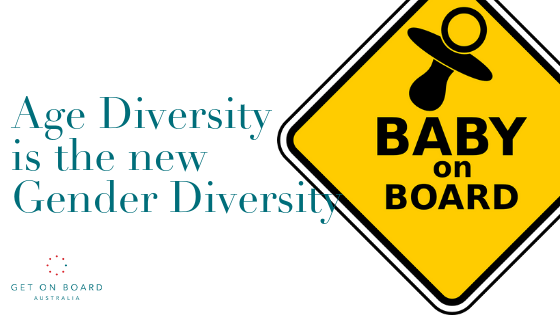Age Diversity is the New Gender Diversity

Why is it that board members are usually of a certain age (in fact, an average of 62.4 years old)? I’m still struggling to answer this question or hear a good enough reason from a board as to why they don’t have at least one younger board member. Particularly in those industries undergoing radical change (I’m looking at you retail).
Recently I was pleased to hear that age diversity is the latest trend in the broader board diversity conversation.
Regardless of what the latest faddish diversity trend is, any diversity conversation must take in and address all diversity factors, not just age or gender. Thankfully, any board can create a diverse group and realise the benefits that come from this variety of perspectives, experiences, and expertise.
In fact, age diversity has a greater impact on smaller organisations. A study done on organisations between 2005 and 2009 found that “… age diversity should be given equal weight to other considerations when composing a successful corporate board in small firms [i.e. a market cap below EUR 150 million].” The study showed improved ROA for those organisations that had an age-diverse board.
Age diversity can be viewed both ways – a predominantly young board could benefit from the wisdom and experience of an older person, and a predominantly older board could benefit from the perspectives and experiences of a younger person.
What can your board do to improve your board’s age diversity?
Make it part of your broader selection criteria, supported by the board as a whole.
This post here can help you have a conversation with your board about how it can become more strategic with its board recruitment and start to build diversity into its ethos.
Be intentional about seeking diverse candidates.
Diversity doesn’t just happen; you probably won’t find diverse candidates via traditional board recruitment methods (i.e. you can’t expect them to find you; you have to go and find them). Start thinking outside of the box when it comes to finding new and diverse candidates. These posts (here and here) give you some ideas and techniques to finding ‘non-traditional’ board members.
Leverage diversity.
It’s no use investing all of the effort, energy, and time on building a diverse board only to shun differences and disregard alternative perspectives and ideas. Find ways to draw out differences and use them to contribute positively to the board’s decision-making and the organisation’s activities.
Techniques like mentoring and reverse-mentoring, idea jams and other creative strategic planning methods are great ways to tap into the collective wisdom of a diverse group.
These techniques are available to all boards and don’t cost any money. All it takes is the desire to do things differently and an open and progressive mindset.
Diversity in the boardroom should always be at the top of directors’ minds. It’s those boards that actually combine desire and action that will survive and thrive into the future.
